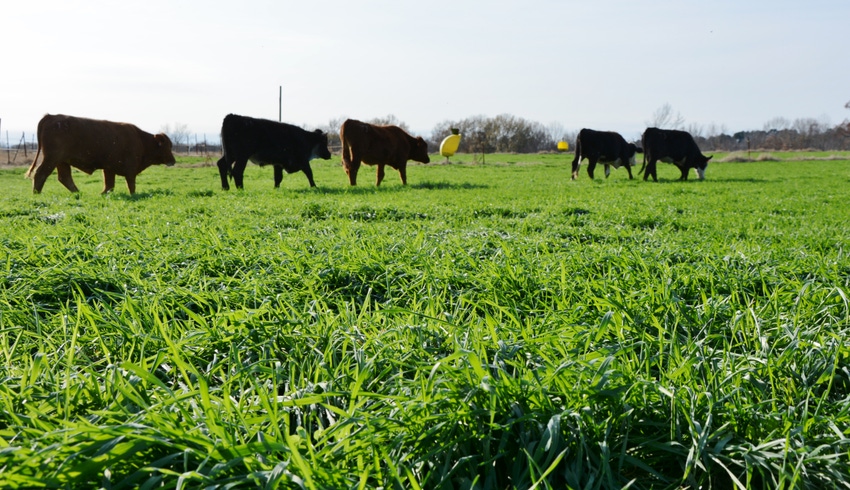Legumes and winter annual grasses such as ryegrass, small grain rye and wheat can also be used to reduce need for and cost of hay.
October 24, 2017

Stockpiled forages and winter annuals can reduce the need for and cost of hay and other supplemental feed for beef cattle producers in regions with adequate annual rainfall, Texas A&M AgriLife Extension Service beef cattle specialist Dr. Jason Banta said.
Banta added that producers can reduce the need for hay and supplements by providing stockpiled forage from mid-November through December and winter annuals from October through May.
“If they choose these options, we want them to know how to best utilize them,” Banta said.
For stockpiled Bermudagrass and bahiagrass, producers should bale the field for hay or graze the pasture 3-6 in. tall in the first part of September each year. Then fertilize and allow growth until the first frost, which is typically by mid-November in east Texas, Banta said. After the frost, the forage can be utilized until the first part of January.
“Utilizing stockpiled forage helps us avoid feeding hay for four to six weeks potentially,” he said.
Banta said producers should “strip-graze” the pasture by using electric fencing to restrict cows’ access to the forage, if possible.
“Provide access to what they could eat in two to four days,” he said. “Then, every few days, move the fence to allow more access. Restricting access will help prevent the cattle from wasting the available forage.”
The forages should be utilized by the first of January to mid-January in high-rainfall areas, because rain will begin to reduce the quality and palatability for cattle, Banta said.
“If we fertilize and have good growing conditions, the stockpiled forage should meet all nutrient requirements for dry cows,” Banta said. “Additionally, it will meet the requirements for most lactating cows. However, in some situations, small amounts of supplements may be needed, depending on the forage quality, milk production and body condition score of the lactating cows.”
In those cases, Banta said lactating cows should generally receive 1-2 lb. of a high-protein supplement per cow per day.
Legumes and winter annual grasses such as ryegrass, small grain rye and wheat can also be used to reduce the need and cost of hay. “Those forages will be extremely high in both protein and energy,” he said.
However, utilizing winter annuals and legumes differs for replacement heifers, pregnant females in late gestation and cow/calf pairs, Banta said.
“If abundant winter annual forage is available, pairs and replacement heifers can be grazed full time in lieu of feeding hay,” he said. “In contrast, pregnant females in late gestation should be limit grazed on winter annuals to avoid potential increases in calf birth weights and calving problems.”
Banta said late-gestation cows should be limited to two-hour grazing sessions daily. “After a couple days, the cows should be used to the routine and become easier to remove them from the winter annual pastures,” he noted.
Grazing dry cows or pairs on winter annuals or legumes should also negate any need for protein or energy supplements, Banta said. Producers should, however, provide minerals with moderate to high magnesium levels of 5-13% to reduce the chances of grass tetany in lactating cows.
“If utilized effectively, grazing stockpiled forages and winter annual forages can tremendously reduce winter feeding costs for producers,” he said. “Whatever is spent on seed and fertilizer can be more than made up in quality forage.”
You May Also Like



